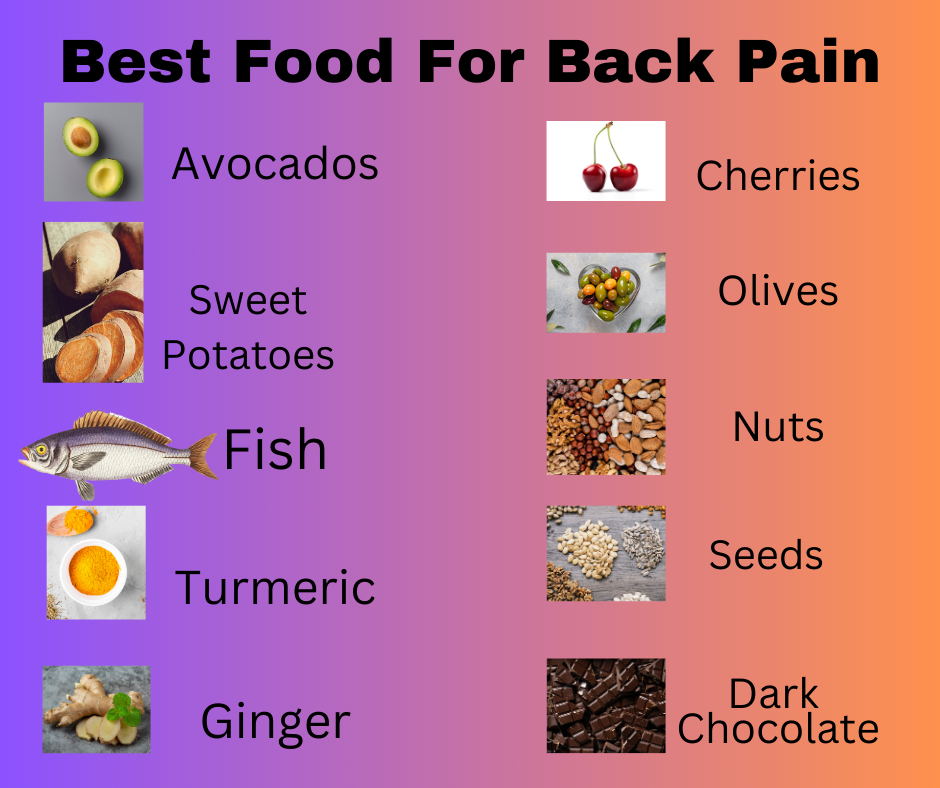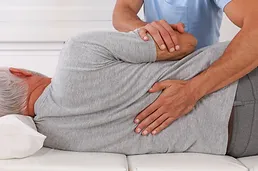No products in the cart.
Back Pain And Hijama Cupping Therapy
Hijama cupping therapy is one of the highly recommended therapies for the reduction of chronic pain, especially back pain. Cupping therapy has shown positive results on back pain.

You will be surprised to know that back pain is one of the most common health issues that people go to the doctor for treatment. It is also the most common reason for absence from work and a leading cause of disability worldwide.
Backbone structure
The backbone is a remarkably well-designed structure connecting bones, joints, nerves, ligaments, and muscles. These work together to provide support, strength, and flexibility.
Back pain can occur anywhere from the base of the neck to the end of the spinal cord. It could be categorized as upper, middle, and lower back pain. The upper and middle back has 12 vertebrae. These bones are connected to the rib cage, the longest part of the back. Discs are there to separate vertebrae from each other. Muscles and ligaments hold the spine together. The lumbar spine or lower back supports the weight of the body. The lower back is responsible for flexing and rotating the hips while walking, sitting or lying down.
Upper and middle back pain is not as common as lower back pain or neck pain because the bones around the rib cage don’t flex or move as much as the bones in the lower back pain or neck. These bones work with the rib cage to protect vital organs like the heart and lungs.
Symptoms of Back Pain
- Stabbing or shooting aches or pains anywhere in the back
- Inflammation
- Swelling
- A recent injury or trauma to the back
- Weakness, numbness or tingling in the back
- Persistent back pain where home remedies don’t help
- Difficulty urinating
- Bowel or bladder problems
- Fever
Risk Factors of Back Pain
Several risk factors are linked with back pain.
- Pregnancy – Having lower back pain during pregnancy is one of the very common factors of back pain. Pelvic changes caused by increased weight may cause lower back issues.
- Age – About 80% of adults experience back pain at some point in their lives. Mostly, back pain symptoms arise between the age of 30 to 50. The older you get, the more fragile your body gets. Back pains keep getting worse as we age.
- Smoking – Numerous studies have shown the connection between smoking and back pain. Smoking not only damages the arteries but also the discs and joints in the back may lead to injury. Smoking also increases the risk of osteoporosis which leads to back pain.
- Obesity –According to the American Obesity Association, women who have a large waist size are at risk for lower back pain. Overweight patients may experience sciatica and back pain from herniated discs. This happens when the spinal structure is damaged from the pressure of extra weight on the back.
- Weak Muscles –Weak abdominal muscles create a lack of support for the spine. Unused muscles or out-of-shape body structures may lead to back pain.
- Genes –A growing number of studies are finding that back pain has a strong genetic link. The increase of lumber disease or degenerative disc disease increases in both close and distant relatives.
- Odd jobs –The majority of back and neck problems are generated by lifting or pushing heavy objects. Even desk jobs can trigger back pain due to poor postures or back support.
- Psychological factors –Psychological factors are directly associated with chronic pains including depression, anxiety, post-traumatic stress, poor coping strategies and poor self-efficiency.
- Bad Habits –There are plenty of bad habits that may increase your chance of back injury. For instance, smoking, drinking, lack of sleep, and poor dietary habits can lead to chronic back pains.
- Overuse of muscles –Overuse of muscles may lead to serious injuries, especially back pain problems. Whenever we are engaged in some extreme physical activity and we don’t give our body time to rest and relax then we are setting ourselves up for physical injury.
- Diseases –Some types of diseases like arthritis, osteoporosis and degenerated disc diseases can contribute to back pains.
Common Causes Of Back Pain
60–80% of people experience neck and back pain at some point in their lives. Back pain may be a symptom of some other medical conditions and may have many causes.
Muscle Strain:
Lifting heavy objects while working out, sudden awkward movements or sleeping in an awkward position can lead to sore back muscles. Back pain from sprained muscles may cause tightness and spasms.
Slipped Discs:
Discs are like cushions of tissues that separate the bony vertebrae from the spine. Vertebrae are the interlocking bones stacked on top of one another over the spine. When the soft material inside the discs ruptures, puts more pressure on the nerves, resulting in back pain.
Herniated Discs:
Herniated discs are very painful. When these ruptured discs press the nerves, it travel from the back down to the legs causing sciatica.
Arthritis:
Spinal osteoarthritis is also a major cause of back pain. It can cause problems with the joints in the hips, joints and other places as well. Arthritis in the spine may lead to a narrow space around the spinal cord. The condition of narrowing the spine is called spinal stenosis.
Osteoporosis:
Thinning of the bone and loss of bone density is called osteoporosis. Bones become brittle and porous making painful fractures on the vertebrae of the spine. These fractures can cause serious pain in the lower back.
Abnormal Curve of the Spine:
The unusual way of curvature of the spine results in back pain.
Kidney Problems:
When organs around the back have some health problem, it also affects the back. For example, kidney stones or infections can cause back pain.
Other Medical Conditions:
Several other medical conditions can be a major cause of back pain. For example, a tumour on the spine, an infection, pelvic inflammatory disease, bladder problems, shingles infection and cauda equina syndrome.
Insomnia or Sleeping Disorder:
Individuals with sleeping disorders experience back pain more often than others.
Menstruation cycle:
One of the major causes of back pain in women is the duration of the menstruation cycle.
High-heeled shoes:
High-heeled shoes cause damage to the back.

How to Prevent Back Pain Naturally
A doctor or a therapist should check severe back pain but sometimes, back pain can be treated naturally by simple home remedies.
1- Try to maintain a healthy weight because it helps to reduce the amount of mechanical force on the spine.
2- Smokers are four times more likely to have spine problems than non-smokers so if you smoke, stop smoking.
3- Try to apply ice or a heat pack on your back.
4- Yoga is an effective way to stretch your back, muscles and joints to enhance your natural healing process through blood circulation and increase flexibility in the spine.
5- Meditation is another great way to improve concentration and decrease anxiety and stress.
6- Swimming is a very beneficial exercise that helps to regulate the functions of muscles and nerves and relieves back pain.
7- Try putting a rolled-up towel under your pelvis while lying down. Let your hips relax and stretch out the tension in your lower back.
8- Try to pick comfortable, low-heeled shoes to prevent yourself from damaging your back.
9- Gently massaging sore muscles is a very effective way to relieve back pain.
10- Taking a bath with Epsom salt works very well with sore muscles. Epsom salt also exfoliates dead skin cells and reduces itchiness.
11- Exercises are also good for lower back pain issues. Stretching loosens up tense muscles and strengthens them.
12- Consuming anti-inflammatory food and alkaline-diet food regularly, helps to reduce back pain. Turmeric milk or ginger-green tea helps to eliminate inflammatory reactions in the body.
13- Bone health is important so taking nutrients like calcium, phosphorous and vitamin D is essential for bone growth.
Treatment for Back Pain

Medications
The majority of back pain episodes are relieved by over-the-counter pain relievers. Take these medications only as directed by the doctor.
Ointments and topical rubs
Ointments and body rubs are very effective for the reduction of back pain.
Steroid Injections
Steroid injections might be recommended by the doctor for severe back pain.
Alternative treatments
Alternative therapies may help relieve back pain including:
- Acupuncture
- Massage therapy
- Chiropractic adjustment
- Biofeedback therapy
- Laser therapy
- Electric nerve stimulation
- Physical therapy
- Hijama Cupping therapy
Hijama Cupping Therapy and Back Pain
People have used cupping therapy for thousands of years to relieve headaches, neck pains and back pains. One of the easiest and most effective treatments for back pain is Hijama cupping therapy.
Chiropractors, massage therapists and even some doctors use cupping therapy to treat neck and back pain. When the cups are applied, a suction is created to pull the blood into the skin. The suction force expands the blood vessels and stimulates the natural healing process. Cupping therapy releases toxins and cleanses the pores from the back.

There is no standard protocol for Hijama treatment for back pain. The Hijama points are along the full length of the spine from the back of the neck to the tailbone. Target the affected area anywhere around the spine. All the muscles get relaxed with increased blood circulation, oxygenation and lymphatic drainage. Treatment can be done with fixed or moving cupping and Hijama wet cupping.
After the treatment, the intensity of pain reduces sometimes, immediately. It enhances muscular movement and your quality of life as well.





Leave a Reply